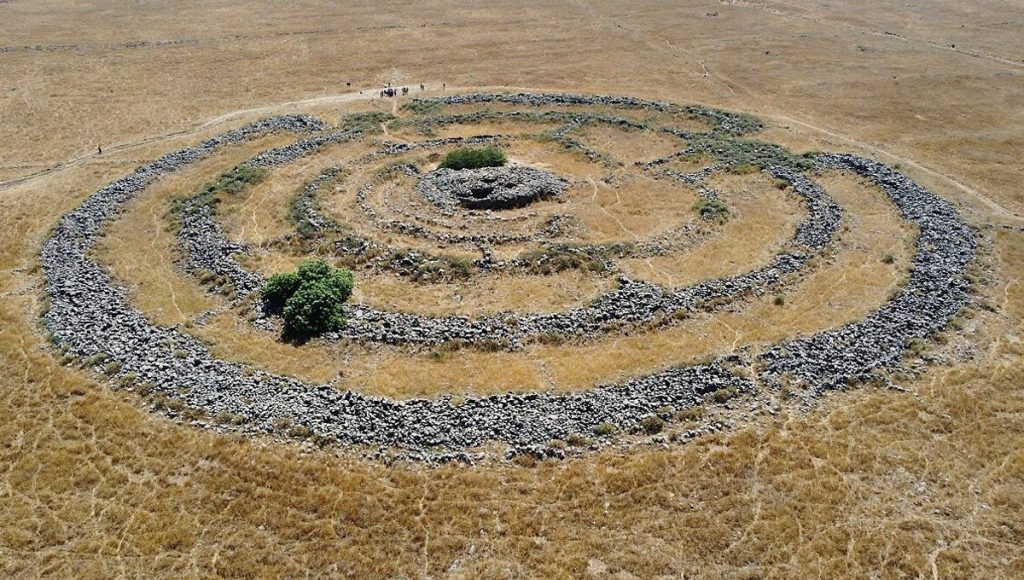The Ancient “Wheel Of Ghosts” Has Turned 40 Meters Since It Was Built 5,000 Years Ago – IFLScience

CLOSEWe have emailed you a PDF version of the article you requested.Please check your spam or junk folder You can also addnewsletters@iflscience.comto your safe senders list to ensure you never miss a message from us.CLOSEComplete the form below and we will email you a PDF versionGET PDFCancel and go backIFLScience needs the contact information you provide to us to contact you about our products and services. You may unsubscribe from these communications at any time.For information on how to unsubscribe, as well as our privacy practices and commitment to protecting your privacy, check out ourPrivacy PolicyCLOSEComplete the form below to listen to the audio version of this articleListenCancel and go backIFLScience needs the contact information you provide to us to contact you about our products and services. You may unsubscribe from these communications at any time.For information on how to unsubscribe, as well as our privacy practices and commitment to protecting your privacy, check out ourPrivacy PolicyAdvertisementSearchSubscribe today for our Weekly Newsletter in your inbox!Subscribe today for our Weekly Newsletter in your inbox!Benjamin TaubBenjamin TaubFreelance WriterBenjamin holds a Master’s degree in anthropology from University College London and has worked in the fields of neuroscience research and mental health treatment.BookView full profileBookRead IFLScience Editorial PolicyFreelance WriterKaty EvansManaging EditorKaty is Managing Editor at IFLScience where she oversees editorial content from News articles to Features, and even occasionally writes some.BookView full profileBookRead IFLScience Editorial PolicyDOWNLOAD PDF VERSIONRujm el-Hiri in the Middle East is eerily similar to another circular structure in Crete.Image credit: Bukvoed via Wikimedia Commons (CC BY 4.0)DOWNLOAD PDF VERSIONThe mystery surrounding one of the largest megalithic monuments in the Middle East has deepened significantly, as new research has just shattered the popular theory that the circular Rujm el-Hiri in the Golan Heights functioned as an astronomical observatory. Also known as the Wheel of Ghosts and the Levantine Stonehenge, this enigmatic labyrinthine structure is thought to be up to 5,000 years old, yet we’re back to square one in terms of understanding why it was built.Originally uncovered in 1968, Rujm el-Hiri consists of a central cairn surrounded by multiple concentric circles made of basalt stones, connected via a series of radial walls. With a circumference of approximately 500 meters (1,640 feet) and a diameter of 150 meters (492 feet), the massive monument and its purpose have been the subject of intense debate for more than half a century.For instance, some archaeologists believe the Wheel of Ghosts served as a defensive fort, while others suggest it may mark the burial site of an important leader or political figure. Unfortunately, very few artifacts have been recovered from within the structure, which means researchers have virtually no clues to work with.However, in 1998, a study came out that showed that Rujm el-Hiri’s symmetry axes and entrances were aligned to the directions of the solstices, equinoxes, Sirius, and other celestial bodies as they would have appeared in the Bronze Age sky. This led to the widespread belief that the ancient monument served as an astronomical observatory.To investigate whether this was indeed the case, the authors of a new study analyzed the tectonic movements of the area around the Sea of Galilee over the past 150 million years. According to the researchers, “the tectonic blocks of northern Israel have continuously moved along an elliptical trajectory in a counterclockwise direction” at an average rate of between 8 and 15 millimeters (0.3 to 0.6 inches) per year.As a consequence, Rujm el-Hiri is likely to have rotated by about 40 meters (131 feet) over the past 4,000 years, which means its axes, entrances, and other features were originally constructed far from their current location.“The region’s integrated geophysical analysis […] reveals that the Rujm el-Hiri site has rotated counterclockwise and shifted from its original location by tens of meters,” write the study authors. “This means that the current orientation of the radial walls and entrances was not the same as ~4000–2000 BCE, and the speculations that they were aligned with celestial bodies of the past are not supported.” “Therefore, Rujm el-Hiri was unlikely an observatory,” conclude the researchers.Exactly why the enormous ring was built therefore remains a complete mystery, although it’s intriguing to note that earlier this year, archaeologists in Crete discovered a remarkably similar circular labyrinth from roughly the same period in history. Attributed to the Minoan civilization, this perplexing structure is just as mysterious as the Wheel of Ghosts, although researchers believe it may have acted as a ceremonial space where ritual offerings and feasts were conducted.The study is published in the journal Remote Sensing.stonehenge,monuments,archaeology,megalithslink to articlelink to articlelink to articleAdvertisementAdvertisementAdvertisementlink to articlelink to articlelink to articleSign up today to get weekly science coverage direct to your inbox© 2025 IFLScience. All Rights Reserved. RSS





